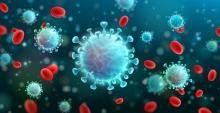חדשות המחקר

Michael Edelstein: Monitoring the COVID-19 immunisation programme through a national immunisation Management system - England's experience (Int J Med Inform . )
In England routine vaccinations are recorded in either the patients General Practice record or in series of sub-national vaccine registers that are not interoperable. During the COVID-19 pandemic it was established that COVID vaccines would need to be delivered in multiple settings where current vaccine registers do not exist. We describe how a national vaccine register was created to collect data on COVID-19 vaccines.

Khalaf Kridin, Noor Mruwat: The cardiometabolic safety of interleukin 23 versus interleukin 17 inhibitors in psoriasis: A large-scale global cohort study (J Eur Acad Dermatol Venereol . )
Robust evidence suggests that psoriasis is associated with an elevated risk of cardiovascular diseases, which embody the most common cause of morbidity and mortality among patients with psoriasis. While biologic agents undoubtedly led to a groundbreaking improvement in patient care and optimized patient outcomes, their effect on cardiovascular outcomes in psoriasis is a scope of controversy. A meta-analysis pooling 38 randomized controlled trials detected no significant influence of biologics on the incidence of major adverse cardiovascular events (MACE) in patients with psoriasis.

Offer Amir: Advanced Hemodynamic Monitoring Allows Recognition of Early Response Patterns to Diuresis in Congestive Heart Failure Patients (J Clin Med . )
There are no clear guidelines for diuretic administration in heart failure (HF), and reliable markers are needed to tailor treatment. Continuous monitoring of multiple advanced physiological parameters during diuresis may allow better differentiation of patients into subgroups according to their responses. In this study, 29 HF patients were monitored during outpatient intravenous diuresis, using a noninvasive wearable multi-parameter monitor.

Obstetrical Outcome following Diagnosis of Gestational Diabetes in the Third Trimester (>29 Weeks) versus Second Trimester (24-28 Weeks): A Retrospective Comparative Study (Am J Perinatol .)
This study aimed to compare obstetrical outcomes between women diagnosed with gestational diabetes mellitus (GDM) in the third trimester after testing negative for GDM in two-step screening in the second trimester and women diagnosed in the second trimester.
(Raneen Abu Shqara, Yara Nakhleh Francis, Shany Or, Lior Lowenstein, Maya Frank Wolf)

Jumanah Essa-Hadad, Mary Cj Rudolf, Noah Mani, Lilach Malatskey: Mapping lifestyle medicine in undergraduate medical education: a lever for enhancing the curriculum (BMC Med Educ . )
In 2017, the Bipartisan Policy Center called for inclusion of lifestyle medicine (LM) in undergraduate medical education. Recognizing the requirement that lifestyle medicine should be an integral and integrated part of the curriculum, we undertook an in-depth mapping process to determine the extent of LM teaching at our Faculty, staff perceptions and the impact on medical students.

Edo Y Birati: Left Ventricular Assist Devices: A Primer For the General Cardiologist (J Am Heart Assoc .)
Durable implantable left ventricular assist devices (LVADs) have been shown to improve survival and quality of life for patients with stage D heart failure. Even though LVADs remain underused overall, the number of patients with heart failure supported with LVADs is steadily increasing. Therefore, general cardiologists will increasingly encounter these patients. In this review, we provide an overview of the field of durable LVADs.

Ben Oren: The Effect of Preemptive Local Infiltration on Postoperative Pain Following Vaginal Hysterectomy: a Retrospective Study (Am J Perinatol .)
Investigates the effect of preemptive infiltration on postoperative pain and the use of analgesics following vaginal hysterectomy (VH).

Avi Benov: Pressure Points Technique for Traumatic Proximal Axillary Artery Hemorrhage: A Case Report (Prehosp Disaster Med . )
While the pressure points technique for proximal hemorrhage control is long known, it is not recommended in standard prehospital guidelines based on a study showing the inability to maintain occlusion for over two minutes. Main symptom: This report details a gunshot wound to the left axillary area with complete transection of the axillary artery, leading to profuse junctional hemorrhage and profound hemorrhagic shock.

Amir Bashkin, Mona Shehadeh, Lina Shbita, Kamil Namoura, Ronza Haiek, Elena Kuyantseva, Yousef Boulos, Orly Yakir, Etty Kruzel-Davila: Baseline moderate-range albuminuria is associated with protection against severe COVID-19 pneumonia (World J Diabetes .)
Diabetes mellitus is considered a leading contributor to severe coronavirus disease 2019 (COVID-19). Aim: To characterize differences between hospitalized diabetic patients with vs without COVID-19, and parameters associated with COVID-19 severity for prediction.

Khalaf Kridin: Isotretinoin and the risk of inflammatory bowel disease and irritable bowel syndrome- A large-scale global study (J Am Acad Dermatol .)
Risk of inflammatory bowel disease (IBD) under isotretinoin is a scope of a long-standing controversy. The burden of isotretinoin-related irritable bowel syndrome (IBS) has not been investigated. Objective: To evaluate the risk of Crohn`s disease (CD), ulcerative colitis (UC), and IBS in patients with acne starting isotretinoin versus oral antibiotics treatment.

Hanna Mandel, Tzipora C Falik-Zaccai: Genetic defects in peroxisome morphogenesis (Pex11β, dynamin-like protein 1, and nucleoside diphosphate kinase 3) affect docosahexaenoic acid-phospholipid metabolism (J Inherit Metab Dis .)
Peroxisomes are essential organelles involved in lipid metabolisms including plasmalogen biosynthesis and β-oxidation of very long-chain fatty acids. Peroxisomes proliferate by the growth and division of pre-existing peroxisomes. The peroxisomal membrane is elongated by Pex11β and then divided by the dynamin-like GTPase, DLP1 (also known as DRP1 encoded by DNM1L gene), which also functions as a fission factor for mitochondria. Nucleoside diphosphate kinase 3 (NME3) localized in both peroxisomes and mitochondria generates GTP for DLP1 activity. Deficiencies of either of these factors induce abnormal morphology of peroxisomes and/or mitochondria, and are associated with central nervous system dysfunction. To investigate whether the impaired division of peroxisomes affects lipid metabolisms, we assessed the phospholipid composition of cells lacking each of the different division factors.

Jumanah Essa-Hadad: The impact of Muslim and Christian religious leaders responding to COVID-19 in Israel (Front Public Health . )
The COVID-19 pandemic is one of the most significant public health emergencies in decades and has affected all countries worldwide. Religious leaders have been recognized as playing a pivotal role in health promotion during times of crisis. This study explored the role that Muslim and Christian religious leaders played in Israel during the pandemic, and the impact that their activities had on the community.

Shemy Carasso: Impact of Short-Acting Disopyramide on Left Ventricular Mechanics Evaluated by Strain Analysis in Patients with Hypertrophic Obstructive Cardiomyopathy (J Clin Med . )
Disopyramide is a class Ia antiarrhythmic drug that has been used for the second-line treatment of symptomatic hypertrophic obstructive cardiomyopathy (HOCM). The aim of the study was to assess the impact of short-acting disopyramide in patients with hypertrophic obstructive cardiomyopathy (HOCM) using two-dimensional speckle-tracking echocardiography.

Gassan Moady, Otman Ali Rania Sweid, Shaul Atar: The Role of Stress in Stable Patients with Takotsubo Syndrome-Does the Trigger Matter? (J Clin Med . )
Takotsubo syndrome (TTS) is a unique type of reversible cardiomyopathy that predominantly affects elderly women. The role of physical and emotional stress in the pathophysiology of TTS is well established. However, the association between preceding emotional triggers and clinical outcomes in stable patients has not yet been fully investigated. We aimed to investigate the association between emotional triggers before symptom onset and clinical outcomes in stable patients with TTS.




